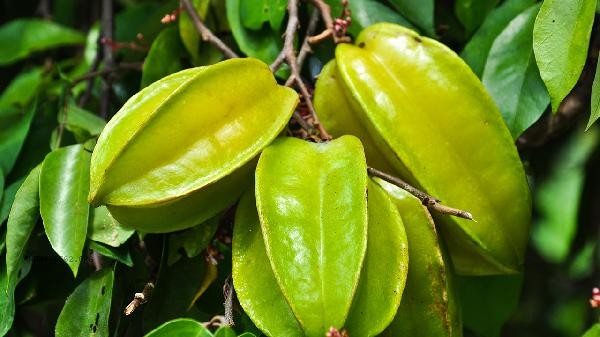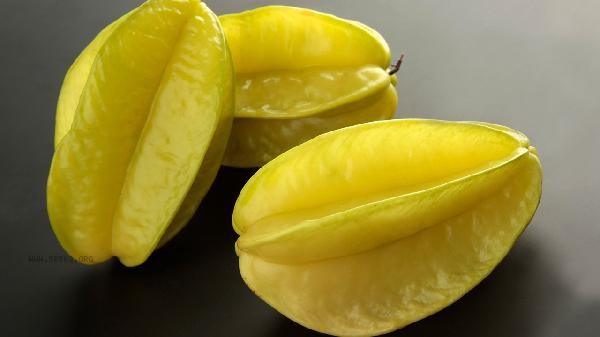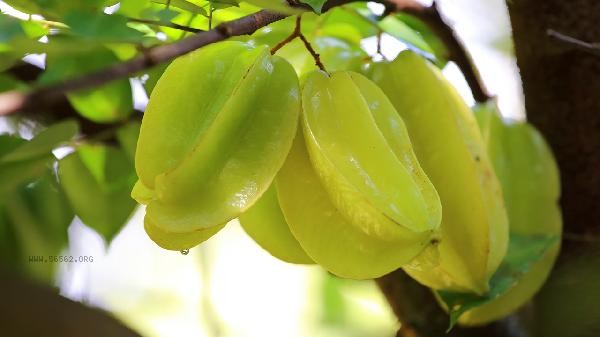Yangmao is produced in Taiwan, Guangdong, Hainan and other places with the best quality, among which Yangmao from Pingtung, Taiwan and Chaozhou, Guangdong are particularly famous for their superior climate and soil conditions. High quality starfruit has the characteristics of full fruit shape, golden color, sweet and sour taste, and abundant juice. Its flavor formation is closely related to factors such as the temperature difference between day and night in the production area, rainfall, and soil mineral content.

1. Pingtung, Taiwan
Pingtung, Taiwan is warm and humid all year round, especially the sandy loam in the Fangliao area, which is rich in potassium elements and conducive to the accumulation of sugar in starfruit. The local use of bagging cultivation techniques reduces pest infestations, resulting in smooth and spot free skin, delicate and residue free flesh, and a unique honey aroma of the starfruit produced. The ripening period is from September to February of the following year, during which the sweetness of the harvested fruits can reach over 8 degrees.
2. Chaozhou, Guangdong
Chaozhou starfruit is mainly produced in the Fenghuang Mountain area, where red soil formed by volcanic rock weathering is rich in trace elements such as iron and magnesium. The local fruit farmers follow the traditional organic planting method, and the fruit is shaped like a five sided star with sharp edges. The flesh is crispy, tender, and juicy, with a balanced sour sweet ratio. The temperature difference between day and night in autumn and winter increases the anthocyanin content of the fruit, and the skin presents an attractive orange red color.
3. Sanya, Hainan
Sanya has a long frost free period throughout the year, abundant sunshine, and produces large and early maturing starfruit. The unique tropical oceanic climate results in fruit juice content of up to 90% and vitamin C content about 15% higher than other production areas. However, during high temperatures and heavy rainfall in summer, it is easy to have a weak flavor. It is recommended to choose winter fruits that are available from December to March.

4. Zhangzhou, Fujian
Represented by Yunxiao County, Zhangzhou Yangtao is cultivated in the fertile soil of the Jiulong River alluvial plain, combined with the subtropical monsoon climate, and has the characteristics of thin skin and small core. The local use of high grafting technology to improve the variety results in lower fruit acidity, making it suitable for fresh consumption. Moderate refrigeration after harvesting can enhance sweetness and concentrate flavor compounds.
5. Yulin, Guangxi
The limestone hilly terrain in Beiliu City, Yulin has good drainage, and the starfruit produced is compact and resistant to storage and transportation. The unique karst topography results in high calcium content in the fruit, giving it a slight mineral flavor when chewed. The starfruit harvested before and after the frost in October each year produces more aromatic substances due to low temperature stimulation, making it suitable for making candied fruits or jam. When selecting starfruit, you can observe whether the edges are intact and whether the skin is wrinkled. Fruits with moderate maturity will emit a fresh fruity aroma. Soaking in salt water before consumption can remove some oxalic acid, and it is recommended for gastrointestinal sensitive individuals to consume in small amounts. The flavors of starfruit from different production areas have their own characteristics. Taiwanese varieties have high sweetness and are suitable for fresh consumption, Guangdong varieties have a balanced sour and sweet taste and are suitable for serving, and Hainan varieties have rich juice and are suitable for juicing. When storing, avoid squeezing and store in a cool and ventilated place for 3-5 days. Refrigeration will reduce the taste quality.









Comments (0)
Leave a Comment
No comments yet
Be the first to share your thoughts!